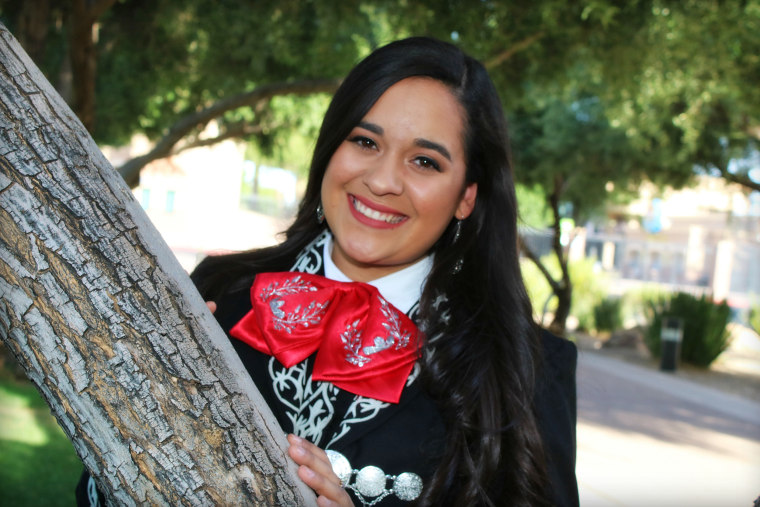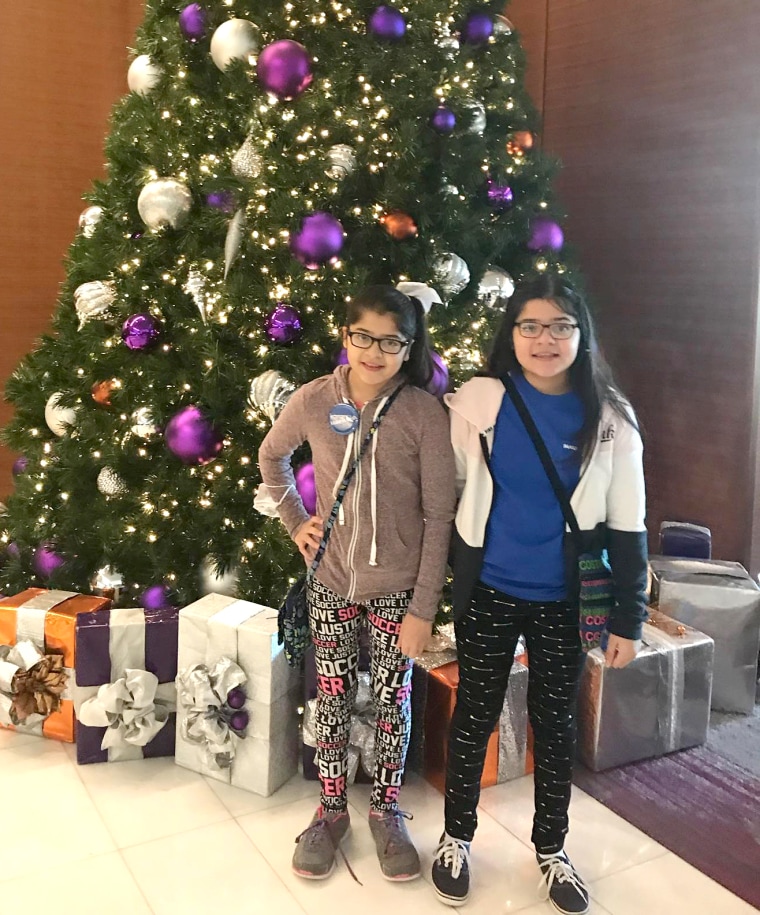Victoria Arias wanted to save lives.
The 18-year-old Arizona honor student was preparing to head to St. Mary’s University of Minnesota with the hope of becoming a doctor.
She played the violin and volleyball, and was a devout Catholic who had saved up for a pilgrimage to Rome to see the pope. Victoria had plans for the future.
“She wanted to be a trauma surgeon,” her mother, Lorena Arias, said. “She had big dreams. She was going to do it.”
Victoria did end up saving lives, but not in the way anyone expected. Last July, Lorena found Victoria unconscious in the backyard pool. She never recovered.
But Victoria’s kidneys, liver, lungs and heart went to four people who’d been waiting for lifesaving organ transplants.
“She was just an amazing child and an amazing person. Now she is even more amazing."
She was among the 10,000 people whose organs were donated in 2017 — the first year more than 10,000 people have donated organs to others after they died, according to the United Network for Organ Sharing (UNOS).
"We are grateful that more lives are being saved, year after year, thanks to the boundless generosity of organ donors," said Dr. Yolanda Becker, president of the national Organ Procurement and Transplantation Network/UNOS Board of Directors.

Nearly 35,000 organ transplants were done in 2017, a 3.4 percent increase over 2016. About 18 percent of these were from living donors — people who gave one kidney or a part of their liver to someone else. But 115,000 Americans remain on waiting lists for organ transplants, UNOS says.
One of those who got lifesaving organs was 13-year-old Stefany Atencio of Netcong, New Jersey. Stefany and her identical twin, Sofia, have childhood interstitial lung disease, a poorly defined condition that leaves kids struggling to breathe and gain weight.
“All the energy they get from food, they use to breathe,” the twins’ mom, Elsy Atencio, said.
Sofia started struggling first, at about the age of 7. “We started noticing she had this skinny body and she didn’t gain any weight. She had a dry cough. They thought it was asthma,” Elsy said.

Then Stefany started showing similar symptoms as well.
Sometimes, the only treatment for the condition is a lung transplant. Sofia went on the waiting list first. She waited 18 months, becoming so thin that at the end she had a feeding tube.
“Nothing happened for a week, for months, for a year. You have to have a match,” Elsy said.
She quit her fulltime job to homeschool Sofia, care for the girls and ferry them back and forth to appointments. Oxygen tubes were everywhere, tripping up family members.
"This is like a new life.”
“You have to have your phone with you 24-7,” she said. The call that an organ has become available could come at any moment, and everything would have to be dropped to get Sofia into immediate surgery.
Sofia got her transplant in 2016. Stefany received hers last year.
The girls’ lives have been transformed. “Now she goes to Sky Zone,” Elsy said, where she watches as the twins laugh and bounce on room-sized trampolines.
“They have so much fun. We never thought they’d be jumping and screaming the way they do now. This is like a new life.”
Related: 2015 was a record year for organ donation
It’s still not easy. Medications must be ordered weekly and the family makes regular two- to-three-hour trips to Philadelphia for checkups. Mornings include a rush of medication and breakfast while also adjusting face masks so the girls don’t get infections from the other kids at school.
But Elsy is grateful to the donors and their families.
“We cannot thank the families enough. They are angels to us,” she said. “We pray to God every night for those angels.”
Across the country in Tucson, Lorena and Michael Arias are comforted, a little, by knowing Victoria’s organs saved four lives.
“She was just an amazing child and an amazing person. Now she is even more amazing,” Lorena Arias said.
They hope to meet the four recipients some day.
"It was Victoria saying ‘Yes, mom. I want you to donate my organs’.”
“Sometimes the recipients don’t want to meet the donors. One reason is they feel guilty that they are alive and our loved ones are gone, which is entirely understandable,” Arias said.
Michael and Lorena both had been longtime organ donors, checking a box on each driver’s license application. “If I can help somebody live, if I am gone, why not?” she said.
Related: Group looks at new plan for liver transplants
Victoria did not have a license yet when she died and Lorena prayed as she sat with her daughter in the hospital, trying to decide whether to donate her organs.
“I was very nervous, very scared, very anxious because I was waiting for Victoria to give me a sign of what to do next,” she said.
Then something happened.
“I got a sense of calm. A sense of peace came upon me," she said.
"I didn’t have that feeling of anxiety any more. I stopped shaking. When that peace came upon me, I knew that’s what she wanted. That’s why I say she made the choice. It was Victoria saying ‘Yes, mom. I want you to donate my organs.’”

